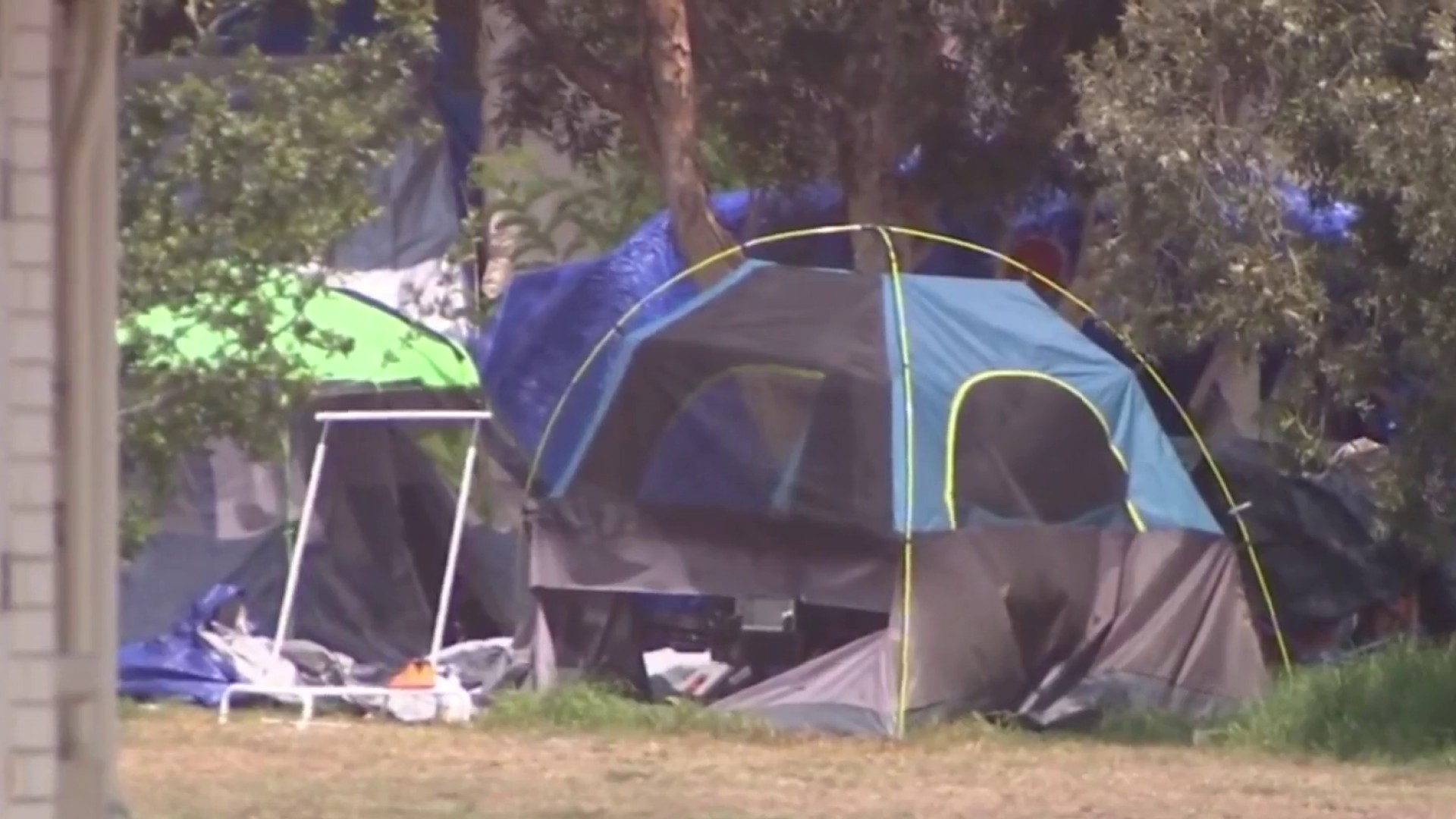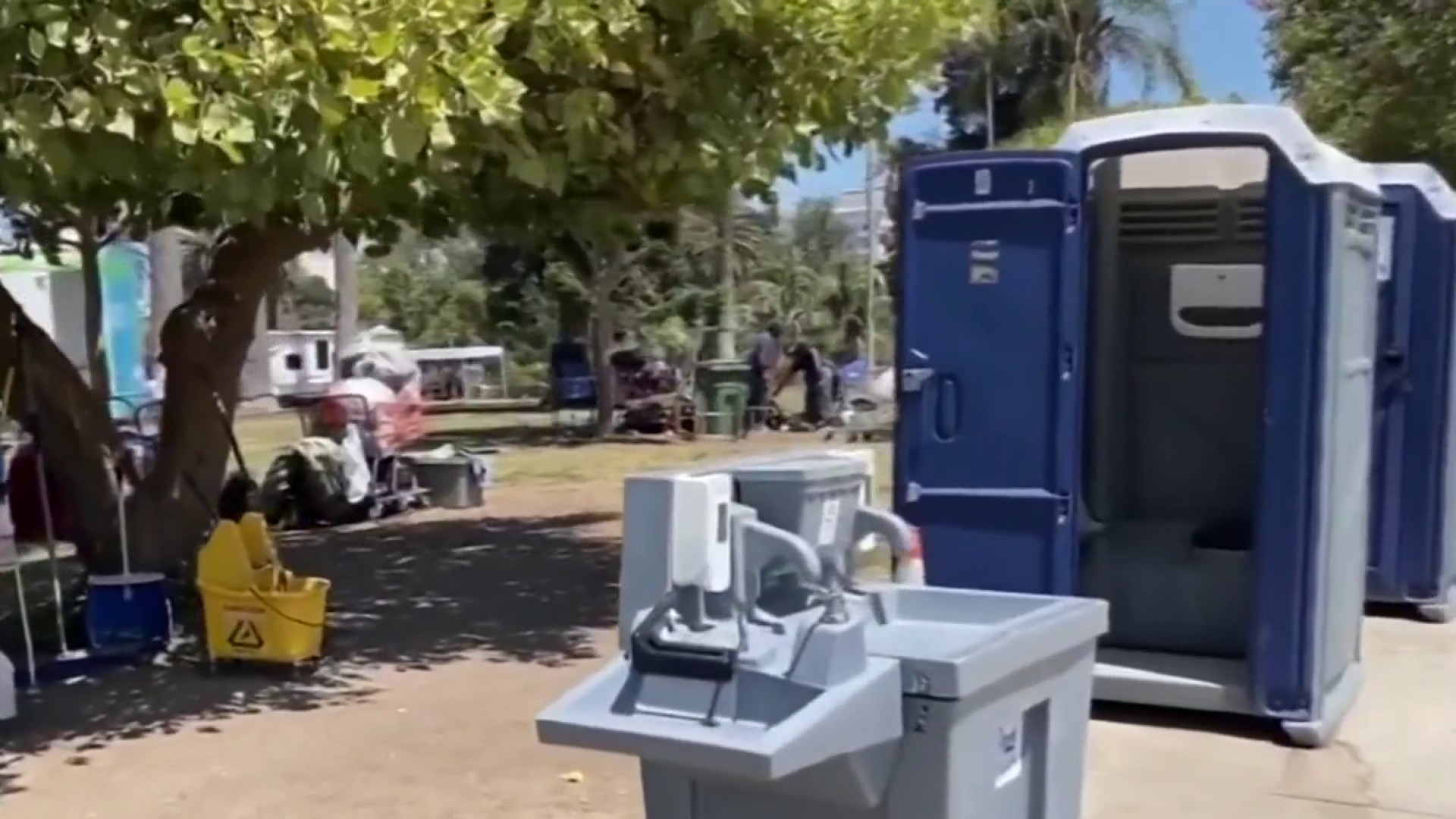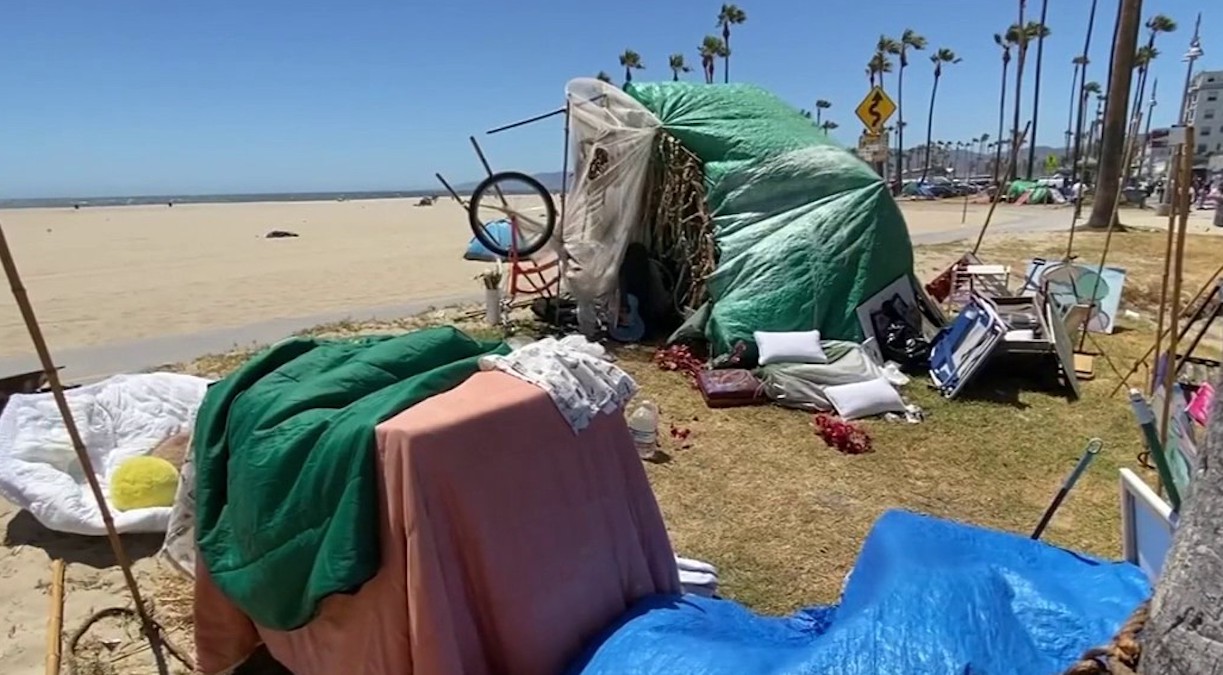
A homeless encampment in the Venice Beach area of Los Angeles, California, U.S. on Friday, July 2, 2021. L.A. City Council members on Thursday approved restrictions on homeless encampments that include a ban on sitting, sleeping or storing personal property that blocks sidewalks, streets or driveways, is near schools, fire hydrants, parks or libraries and other public locations. Photographer: Jill Connelly/Bloomberg via Getty Images
The Los Angeles Homeless Services Authority reported Wednesday that the region has nearly 60% more shelter capacity for people experiencing homelessness than existed three years ago, along with more permanent housing options, but still is falling short of meeting demand.
LAHSA reported shelter capacity for 24,616 people, an increase of 57% over the last three years, in addition to 33,592 permanent housing options, up 16% over the same time period.
The shelter and housing options do not meet the number of people who were counted as experiencing homelessness during the 2020 count, which was 66,436 in Los Angeles County. LAHSA's 2021 count was canceled due to COVID-19, but the region's unhoused population is believed to have increased by thousands since the start of the pandemic.
The increase in shelter and housing options comes as the pandemic significantly strained the region's shelter supply, as congregate shelters decreased the number of occupied beds to comply with social distancing guidelines from the U.S. Centers for Disease Control and Prevention. Project Roomkey and Project Homekey, funded through federal, state and local dollars, helped make up for the loss.
Get top local stories in Southern California delivered to you every morning. Sign up for NBC LA's News Headlines newsletter.
"Our rehousing system's response to COVID saved lives because of unprecedented coordination across sectors and an influx of state and federal emergency funding," LAHSA Executive Director Heidi Marston said. "We must build off of that momentum as we emerge from the pandemic to build the infrastructure necessary to address our homelessness crisis and collectively confront the conditions that continue to push people into homelessness."
LAHSA's housing and shelter inventory counts, as well as a count of the number of people in the shelters on any given night, were conducted on Jan. 27 and released on Wednesday. More than 17,000 people were counted in the shelters, about the same as last year, Marston said.
According to LAHSA, the region's rehousing system needs to be more balanced with an average of five exit options for every shelter bed, but the current ratio is about one-to-one, causing people experiencing homelessness to remain in shelters or on the streets instead of being rehoused into permanent housing.
"It is critical that our region continues to add to our housing and shelter supply. We need more strategic investments that create low-barrier and private shelter options in areas of the county where the need is greatest," Marston said. "But shelter without a permanent housing option leaves people stuck."
Councilman Mark Ridley-Thomas repeated his call for a "Right to Housing" policy in Los Angeles, saying the city needs "to be laser-focused on targeting our investments effectively, which means acknowledging that the imbalance in the interim and permanent housing beds that comprise our homeless response system facilitates people getting stuck in short-term shelter and inevitably militates against others from transitioning off the streets."
"If we are going to make a difference on the street, and lay the groundwork that obligates government to establish a Right to Housing, we need to invest in a balanced system where we have three times more permanent housing solutions than interim ones," he said. "It must be the focus of the City Council to recalibrate our response and invest in the long-term solutions needed to address this crisis. This must be our priority, and I intend to make sure that's the case."
Along with falling short of demand for interim shelter and permanent supportive housing, Los Angeles has an affordable housing shortage that contributes to the homelessness crisis, which LAHSA attributes to "decades of intentional policy choices to downzone housing capacity and exclude and marginalize people of color."
The city has the fewest number of housing units per adult of any major U.S. city, LAHSA reported. The county needs 509,000 additional affordable housing units to meet its current need, and at the same time, the county's housing market has a 5% vacancy rate, according to Marston.
"Thanks to Prop. HHH, there are nearly 13,000 permanent housing units on the way, but we need more affordable housing options to solve our region's housing crisis," she said.
Voters in November 2016 passed Proposition HHH to use $1.2 billion to build 10,000 units for homeless Angelenos, more than tripling Los Angeles' annual production of supportive housing.
The city's 2021-22 fiscal year budget allocates $362 million in Proposition HHH funding to spend on 89 housing projects with more than 5,600 units. As of April, only seven housing projects with 489 units have been built,
and 44 are under construction.
The Los Angeles Department of City Planning unveiled its plan to zone the city for the production of nearly 500,000 housing units, with more than 200,000 units reserved for lower-income residents, over the next decade.
If adopted by the City Council, the Housing Element would guide Los Angeles' housing policy from 2021 to 2029. The most recent Housing Element was adopted in 2013 and remains in effect through the end of the year.
According to the Department of City Planning, the next Housing Element needs to allow the city to increase its current level of housing production by a factor of five and add about 57,000 new units of housing each year for the next eight years in order to address the housing shortage, City Planning reported.
The plan includes a rezoning program that would increase density in resource-rich neighborhoods that has been limited to single-family-only uses to create the capacity for 219,732 new housing units within three years of the plan being adopted.




